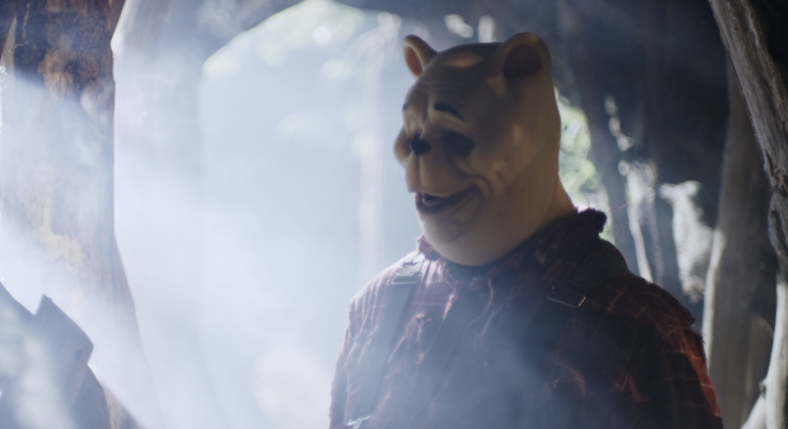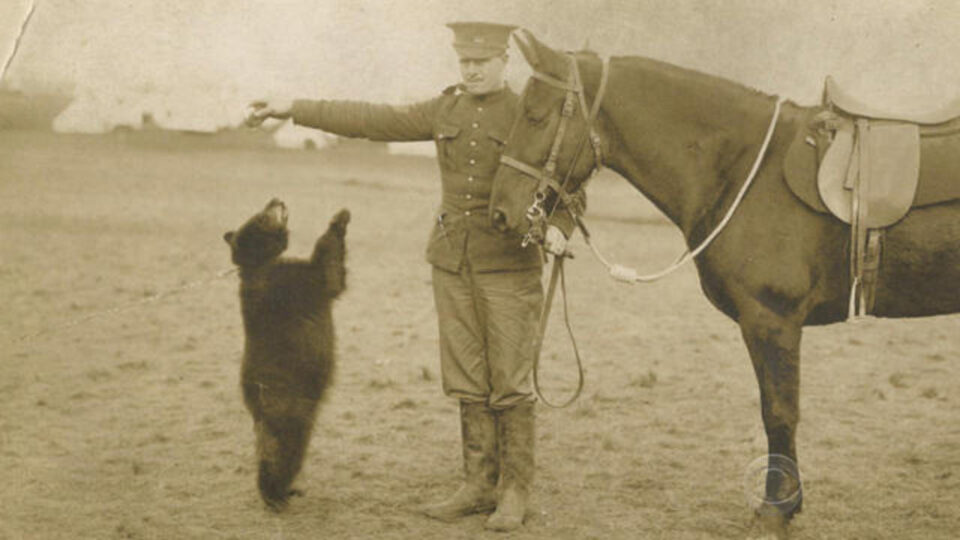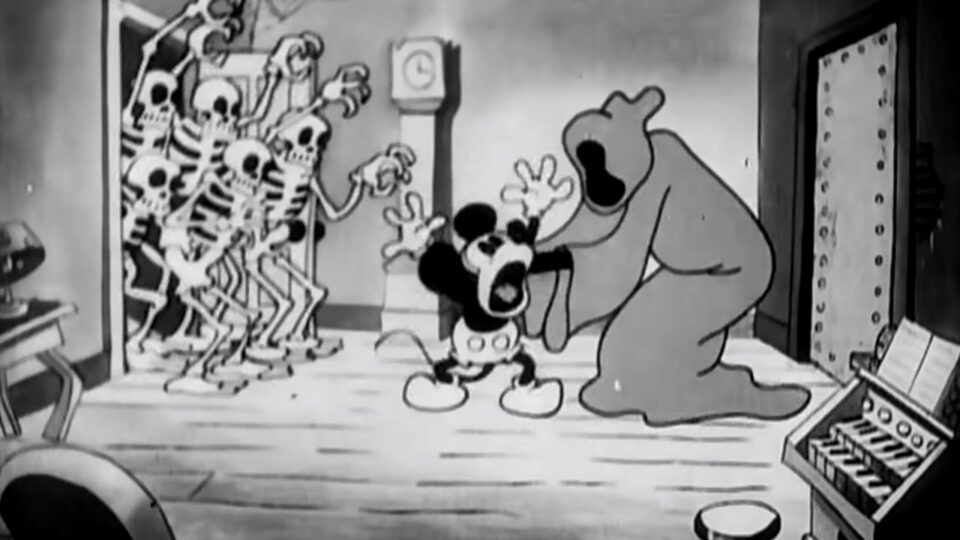‘Winnie the Pooh: Blood and Honey’ And Disney’s Horror Roots

The theatrical release of Winnie the Pooh: Blood and Honey is finally upon us, proving that, yes, this is actually a real movie. After Dread Central broke the news about director Rhys Frake-Waterfield’s delightful defilement of a childhood classic, the internet freaked out.
Admittedly, following a feral, bloodthirsty Pooh Bear and his menacing sidekick Piglet on a killing spree seems inherently ridiculous. Although Winnie the Pooh: Blood and Honey has become a viral sensation largely due to its absurd premise, the actual origin story dates all the way back to the horrors of World War I.
The original 1926 children’s book Winnie-the-Pooh by author and illustrator A.A. Milne has fallen into public domain, but that’s not the only reason why it’s being made into a horror movie. From the start, Walt Disney himself has always looked to the horror genre to attract early audiences that needed to be enticed into accepting the new and magical world of animation.
For the Disney Corporation, horror has always been here. Actually, it’s a wonder that Walt Disney himself never pursued a darker twist on Winnie the Pooh and the adventures of Christopher Robin, set in the vast forest of the Hundred Acre Wood.
Winnie’s Origin Story in the World’s Bloodiest War

Due to copyright issues, Winnie the Pooh: Blood and Honey won’t be able to use the beloved characters of Tigger and Eeyore since they were not featured in Milne’s original novel. There will be bees, though, that act as Pooh’s murderous scouts on the lookout for bikini-clad damsels in distress. While unlikely, the horror comedy could go back in time to World War I to explore the real-life origins of the actual black bear that inspired the classic children’s story.
At the time of WWI, Canada was a Dominion of the British Empire that was unable to decide its own foreign policy. Essentially forced into the war, over 600,000 Canadians were sent to fight. One of them was a veterinarian named Harry Colebourn, who wound up purchasing a black bear cub from a local hunter for $20 while stationed in Quebec for training camp. Harry named the bear Winnie, after the city of Winnipeg.
During the war, Winnie became the mascot of the Fort Garry Horse Regiment in the south of England. The soldiers there bonded with Winnie until they were shipped off to France to endure some of the worst war atrocities in history.
Winnie wound up in the London Zoo in 1914, visited often by A.A. Milne’s son, Christopher. The nightmare of WWI wound up producing one of the world’s most enduring childhood classics. A sequel to Winnie the Pooh: Blood and Honey has already been greenlit, so maybe a frightening flashback could be in store in the future.
Mickey Mouse and Disney’s Commitment to Horror

Only three years after Winnie-the-Pooh was published, Disney released the horror short film The Haunted House starring Mickey Mouse in 1929. In the short, Mickey is trapped in a cabin with a large spider, bats, a mysterious cloaked figure, and a barrel of skeletons. It’s fascinating to watch the short now, especially the scene where Mickey keeps running into a series of endless dead ends when he tries to escape. The sequence ties into the anxieties of liminal horror and must have disoriented audiences in the late 1920s in much the same way as viral short films like The Backrooms do today.
The Haunted House was so successful that it led to the release of The Skeleton Dance and more elaborate pieces of animation such as The Mad Doctor which featured tall, ominous gothic castles as a backdrop. The success of these shorts led Walt Disney to take a gamble and put out a full feature that could operate as a work of horror and a crowd-pleasing fairy tale.
Snow White and the Seven Dwarves has a surprising amount of unsettling imagery when you revisit it now through the lens of a horror fan. It was a smash hit that led to other dark explorations of childhood terror in Pinocchio and the frenzied wizardry of the 1940 Fantasia. Disney was always taking risks. But they knew that the appetite for horror was ravenous.
The genre as a whole has to keep reinventing itself, even though it’s been a proven money-maker for over a hundred years. When Winnie the Pooh: Blood and Honey hits this weekend, indie horror is likely to have yet another example of box office success after Terrifer 2 and Skinamarink.
So, maybe a gory reimagining of a classic Disney character isn’t so laughable, after all. The creators of Blood and Honey took a top-of-the-line Halloween mask from the artists over at Immortal Masks, and matched it up with a classic kid’s property that was up for grabs. In the age of the internet, that can be enough to catch fire and inspire a ton of imitators. Winnie the Pooh: Blood and Honey just did it first, much like Disney did back in the era of the Great Depression.
While I do think that Blood and Honey is honoring Disney’s horror past, it’s also giving off some of the rebellious energy that Randy Moore’s black-and-white trippy family film Escape From Tomorrow embraced. Shot illegally inside of Disneyland and Disneyworld, the house of mouse decided not to sue the filmmaker. If Blood and Honey is a success, the next wave of public-domain horror comedies could usher in a DIY subgenre that could sway Disney to fully embrace the genre that gave them so much early success.
Winnie the Pooh: Blood and Honey is in theaters now.
Categorized:Editorials News

